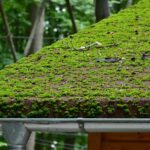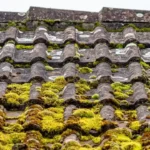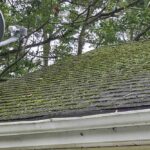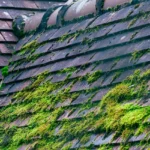Proper roof drainage is crucial for maintaining the structural integrity of your home. As a DIY homeowner, understanding how to manage roof drainage can save you money and prevent water damage. In this article, we’ll explore essential roof drainage tips to help you tackle this important aspect of home maintenance.

Understanding Roof Drainage Systems
A roof drainage system is designed to guide water off the roof and away from your home’s foundation. This is vital to prevent water pooling, which can lead to leaks, mold, and structural damage. For more insights, explore this comprehensive guide on effective drainage solutions.
Components of a Roof Drainage System
There are several key components in a roof drainage system:
- Gutters: Channels that collect and direct water.
- Downspouts: Pipes that carry water from gutters to the ground.
- Drains: Openings that allow water to escape from the roof surface.
Importance of Regular Maintenance
Regular maintenance of your roof drainage system is essential to ensure its efficiency. Clogged gutters and downspouts can lead to overflow and potential damage. For a detailed checklist, visit our maintenance checklist.
DIY Roof Drainage Tips
1. Inspect and Clean Gutters Regularly
Inspecting and cleaning your gutters is the first step to maintaining effective roof drainage. Remove debris such as leaves, twigs, and dirt to prevent blockages.
2. Ensure Proper Slope
Your gutters should have a slight slope towards the downspouts to ensure water flows properly. Adjust the hangers if necessary to achieve the right slope.
3. Check for Leaks and Damage
Inspect your gutters and downspouts for any leaks, cracks, or damage. Repair or replace any compromised sections to maintain the system’s integrity.
4. Install Gutter Guards
Gutter guards can help prevent debris from clogging your gutters, reducing maintenance needs and prolonging the life of your drainage system.
5. Use Extensions for Downspouts
Ensure your downspouts extend far enough from your home’s foundation to prevent water damage. Use extensions if necessary to direct water away.
Advanced Tips for DIY Enthusiasts
Consider Rain Barrels
Integrating rain barrels into your drainage system not only conserves water but also reduces the amount of runoff. Learn more about combining these systems on our page about rain barrel systems.
Address Steep Roof Challenges
Steep roofs require special consideration for drainage. Our solutions for steep roofs offer tailored advice for these situations.
Common Roof Drainage Problems
Clogged Gutters
Clogged gutters are a common issue that can cause water overflow and damage. Regular cleaning is essential to prevent this problem.
Improper Installation
Poorly installed gutters and downspouts can lead to ineffective drainage and water damage. Ensure your system is installed correctly.
Structural Damage
Water pooling due to poor drainage can cause significant structural damage over time. Address drainage issues promptly to avoid costly repairs.
Preventing Mold and Mildew
Effective roof drainage is crucial in preventing mold and mildew, which thrive in damp conditions. Explore our mold prevention tips for comprehensive guidance.
Conclusion
Maintaining your roof drainage system is a vital aspect of homeownership. By following these roof drainage tips for DIY homeowners, you can ensure your home remains protected from water damage. For more expert advice, visit this resource on drainage systems.

FAQ Section
1. How often should I clean my gutters?
It’s recommended to clean your gutters at least twice a year, in the spring and fall, to prevent clogs and ensure proper drainage.
2. What are the signs of poor roof drainage?
Signs of poor drainage include water stains on walls or ceilings, mold growth, and puddles near your home’s foundation.
3. Can I install gutter guards myself?
Yes, installing gutter guards can be a DIY project. Ensure you choose guards compatible with your gutter system and follow the manufacturer’s instructions.
This article contains affiliate links. We may earn a commission at no extra cost to you.








